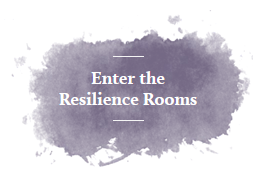The process of manifesting was the focus of Rhonda Byrne’s bestselling book The Secret, which sold more than 30 million copies. Essentially, manifestation is bringing something tangible into your life through attraction and belief and through the process of outwardly expressing your intentions.
Manifestation or the “law of attraction and positive thinking” which it’s also referred to as, has roots in the 19th-century spiritual movement. It can also be traced back to ancient spiritual teachings, including Hindu and Buddhist philosophies about the unanimity of our mind, body, and the universe at large.
According to Gabby Bernstein, “The #1 key to manifesting is to cultivate the energy of what you want to experience. Cultivating the energy of what you want is crucial because manifesting happens on the level of energy.” Further, “We’re all beings of energy. When our energy vibrates at a low level, we attract low-level circumstances. But when our energy is in a high vibration, we attract positive outcomes.”
Google searches for the term manifesting have skyrocketed 669 percent; “shut up I’m manifesting” was among the defining memes of 2020. Today the trend is still holding up significantly. The reason may be connected to the direct health benefits that are known to be derived from positive thinking and the spiritual trend toward practicing gratitude, positive affirmations and mantras, and positivity in general.
Manifestation refers to focusing your thoughts on a desired outcome through practices like mindfulness, visualization, meditation, prayer, journaling, a vision board, a manifestation/intention/future box (pictures of items you want to manifest), and expressing verbal intentions to try to bring your thoughts into reality.
The Pitfalls
While working with patients, I have heard, “I can’t share that, because if I do, I’m going to manifest it.” There is fear that if they expressed negative thoughts, feelings, or desires to act upon their impulses, they would directly and negatively impact their outcomes.
This, unfortunately, puts them and others in a position whereby they could experience self-blame for negative events that happen outside their control, feel guilt and shame for having the thoughts, feelings, and impulses in general, and can be the impetus for denying, distracting from, and avoiding these thoughts, feelings, and impulses because of concern that they would inadvertently harm them.
Avoiding, negating, and resisting our innate human thoughts, emotions, and impulses is counterproductive and antithetical to personal development and highly effective spiritual practices such as self-acceptance, self-belief, and self-compassion.
It would be perfectly understandable that if a person is riddled with guilt, shame, and avoidance, that they are less likely to be curious, open, and nonjudgmental toward studying and seeing themselves, challenging their fears and prescribed narratives, and making a concerted effort to expand upon their thinking and behavior.
Manifesting Empowerment and Value-Driven Behavior
Unfortunately, we can’t will or wish our way into things happening for us. There are many things out of our control that impact our inevitable destinies. We must take into consideration the barriers that impact our circumstances, including systemic challenges such as poverty and discrimination or personal challenges such as mental health and socialization issues, our level of emotional intelligence, and temperament, among many other things. These factors are real and impactful.
As humans, we all carry limiting beliefs such as I’m not good enough, I’m not motivated enough, or I’m powerless, which get in the way of carrying out value-driven behavior compelling us to be our best selves. While we understand that by buying into negative beliefs, we are more likely to act in ways that correspond, we still need to notice them, acknowledge them, and exercise our self-efficacy and self-empowerment to facilitate mindful and value-based decision-making.
The power is in the doing and having concrete examples and experiences from which to extrapolate. The magic lies in feeling empowered, so change is a proactive process facilitated by self-awareness, intentionality, committed action, and practice.
Your brain’s reward center still wants the dopamine release that some behaviors provide. It may not stop “wanting,” even if you make a philosophical change to how you approach yourself and your behaviors. You’ll still have ongoing responses to your behaviors, as well as self-defeating thoughts and feelings.
Your continuing need to work through them requires acceptance and understanding, rather than self-blaming or avoiding. At times, understandably, these vulnerabilities will make it harder to be your best self.
Manifesting as a Two-Step Process
The first step to manifesting is noticing, acknowledging, accepting, and being with all that shows up. Any thought, feeling, body sensation, or impulse is met with nonjudgmental openness, kindness, and compassion.
The triggers, barriers, and parts of yourself that are holding you back from your hopes, dreams, and goals, as well as external factors that may induce fear, hopelessness, and helplessness are also gently and overtly acknowledged.
The second step is directly and proactively asking the universe for what you want with intentionality and effort. For instance, instead of thinking, “I wish I could do a better job at managing my anger, but what’s the point, I can’t control myself,” reframe your mindset and intention to “While managing my anger is challenging for me, I’ll commit to practicing mindfulness, stress management techniques, and being more conscious about being connected to my values of dignity, relationships, and thoughtfulness. I can and will do this.”
If you keep reminding yourself how important those values are for you by repeating your intention, you’ll be successful at manifesting your goal of being more relational and calm in your interactions, rather than negatively responding and reacting out of anger, frustration, sadness, and disappointment.
The greater confidence you cultivate by successfully attaining your goals and aspirations, the more you’ll commit to doing when future aspirations arise. Anything tangible, such as speaking it aloud, journaling, utilizing a vision board, etc., can bolster motivation, enthusiasm, and focus. Being on a higher vibration and exuding positive energy will help you attract and manifest what you want.
Continue to do things that increase self-empowerment, confidence, and personal power. In case you need the reminder, you’ve got this, you’re worthy of your dreams, and you will succeed.
To help you strive toward your goals here is a Motivation Guided Motivation led by me. Please subscribe to my YouTube channel for more interviews and guided meditations. Blog as published in Psychology Today.



